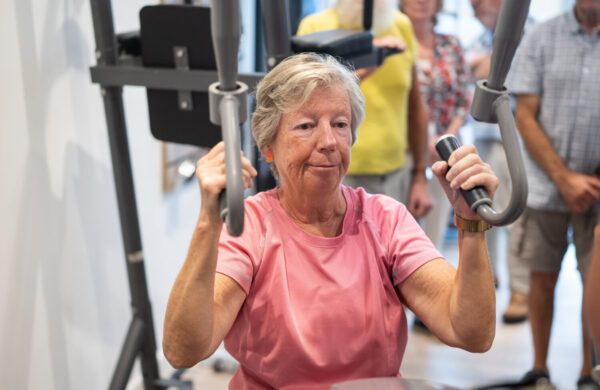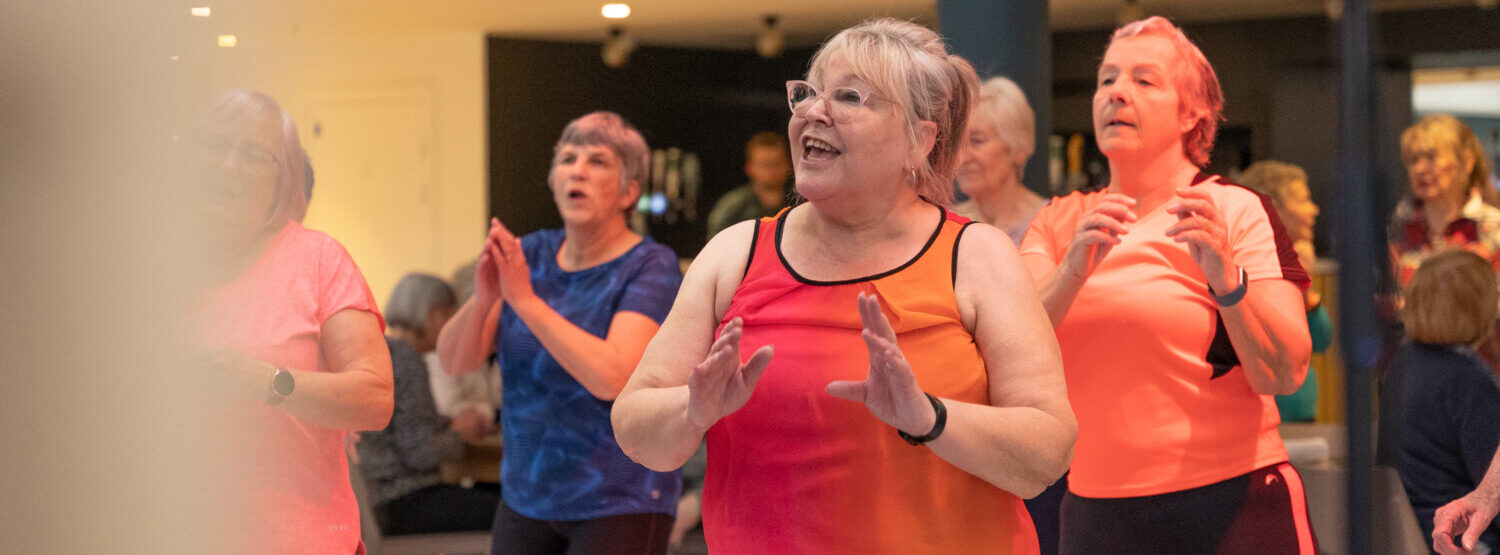
How A Local Leisure Centre Engaged Older Audiences
Here's how a local leisure centre got older adults active.

Date: 3 July 2024 Author: Energise Me
The fear of judgement or not being able to keep up can be a barrier to joining a physical activity class. Amanda, CEO for Move Momentum, has received funding to create an online platform so that people can dance in the comfort of their own homes.
We wanted to create an online dance subscription platform that’s geared towards older adults, people with long term health conditions and those with disabilities. During the COVID-19 pandemic, we put a lot of our dances and exercises on YouTube. We were really pleased to find that our participants enjoyed them.
Since, newer participants have asked to have access to those clips as they felt it would be helpful to do some activity at home, alongside coming to classes. There isn’t a huge number of online resources available for our target demographics. What we were hearing from them suggested that there was a demand. But we hid those older videos as they weren’t done very well. They were done quickly and at home because of the needs at the time. So, we thought – why don’t we do it properly this time?
A huge barrier to physical activity for this audience is transport and bringing dance to people’s living rooms will absolutely overcome that.
We set up focus groups to better understand:
And we discovered all sorts of things! Like how many people they would prefer in the videos and the level of descriptions they’d want. One specific request was having things like adaptations within videos and tutorials.
A huge barrier to physical activity for this audience is transport. Bringing dance to people’s living rooms will absolutely overcome that.
The social aspect of physical activity is so important. So this platform will have its own community portal where people can have conversations. Equally, we’re going to create a Facebook group to create the community element.
Given this will be an online platform, there may be a digital barrier as people will need a device connected to the Internet. Though we’re not at that stage in the project yet, we’ve started flagging organisations that do things like digital support and can provide equipment like tablets. So, when we get to that point, if the feedback identifies, we’ll consider partnering up with them.
We’ve learnt not to make assumptions
In the past, we’ve worked a lot with churches, community groups and cafes – places where our audience already is – and talked them through what the classes look like. Which is great because we make some incredible connections. I think it helped that, in the past, the person who spoke to them initially was also the person who led their session. But that did depend on the person’s availability.
The thing we’re mindful of is that these are people already engaged in community services. We’ve worked with Winchester Radio before and part of this upcoming project will be delivering audio dance sessions via radio segments.
We’ve learnt not to make assumptions. So we’ve also tried traditional social media and newspaper ads and we’ve had people find us through both. Most importantly, don’t underestimate the power of ‘word of mouth’.
The first, and most obvious, strand is: is the venue accessible and does it fit the participant’s needs? Does it have parking? Is it near a bus stop? Is it somewhere that’s easy to get to? Then once you’ve found a location, is there space and are there facilities to accommodate those with wheelchairs or walkers (for example)?
Our website has an accessibility function for things like text to speech. And we make sure the colours are contrasting because information needs to be easy to find and read.
Another thing to consider is financial accessibility. A lot of our audience have some form of income whether that’s a pension, benefits or employment. But for many of our participants, the funds available for taking part in activities is limited. So, we try to keep our classes really affordable and even offer a bursary to help people access our physical activity opportunity.
Flexibility and adaptability are key. We encourage participants to go at their own pace and do what suits their bodies and needs. It’s never a case of “you have to do this,” but “try it this way instead.” If one movement doesn’t feel good, that’s fine, they have the freedom to switch it for one they prefer. If people need to sit and take five minutes, also fine. The session has to work for them, and that is something we advocate throughout their journey with us.
We’ve also found it best to gear sessions towards a particular demographic. There are brilliant mixed sessions out there. However, we’ve noticed that people want to be in a room with others like themselves and who are having a similar learning experience. For the minority, a session advertised as ‘for everyone’ may make them feel like the odd one out.
We have an over 65 class and they all know that everyone is going to be like them. Our wheelchair classes are also split by age, so they have commonalties that they can talk about too.
we don’t want people to not try something new and different because it’s not labelled for them.
We don’t want the platform to be prescriptive. I think part of this demographic wanting to do something online is having more autonomy and power over what they choose to do.
The descriptions will help people figure out if it’s right for them (and what parts of the body the movements target). We didn’t want to label clips as ‘for older adults’ or ‘for those with long term health conditions’ because we don’t want people to not try something new and different because it’s not labelled for them.
We measure our impact through a story of change. There’s four components to that: physical health impact, mental health impact, social impact and skills development. From our reporting, we know that our participants see improvements in all of those areas. And of course, we dig a little deeper. We see increased confidence, improved balance and better self-esteem across our participants.
We’ll be taking a very similar approach to our online platform too so that we can make sure our videos are providing the same experience as the classes.
If you’re interested in Move Momentum’s work, please contact info@movemomentum.co.uk
The Hampshire Active Health Programme provided one off grants to organisations working to encourage and provide physical activity opportunities in communities facing the biggest health inequalities.
The programme is managed by Energise Me, on behalf of Hampshire County Council, with funding provided by the Contain Outbreak Management Fund (COMF) from the Department of Health and Social Care.